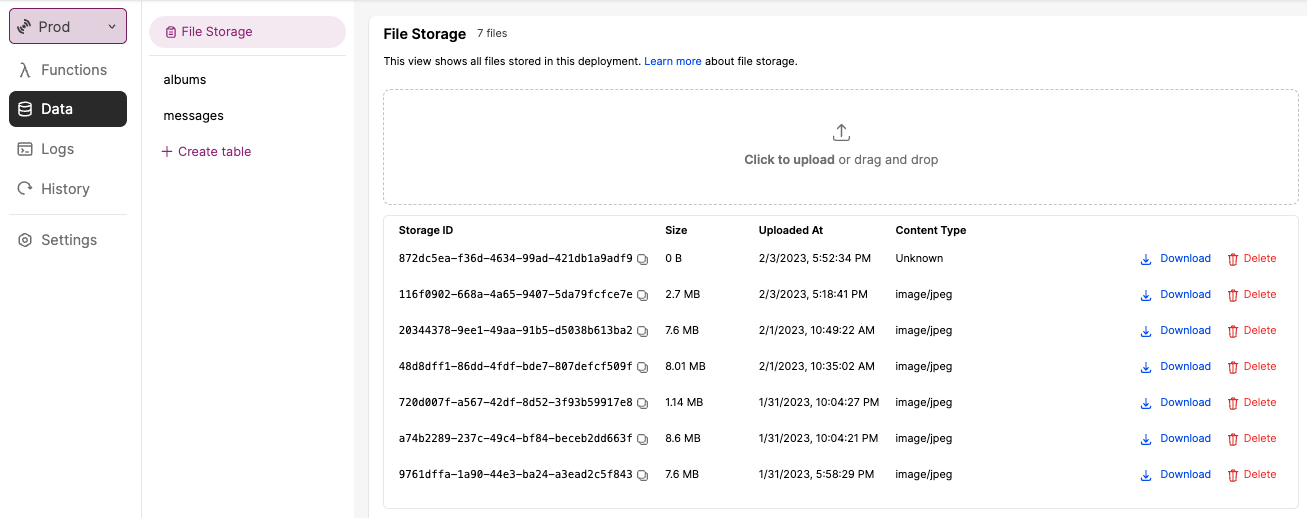HTTP endpoints are here! Convex 0.9.0 extends the platform by allowing you to build your HTTP API right within Convex.
The full list of changes in 0.9.0 is:
- HTTP Endpoints
- File Storage in the Dashboard
- Breaking: API Changes in Actions
- Breaking:
runAtNow Uses Milliseconds
Details below.
HTTP Endpoints
You can now define HTTP endpoints right within Convex!
This enables you to build a HTTP API that interacts with all of your Convex data. This is useful for building a public API or receiving webhooks from external applications.
HTTP endpoints are defined with httpEndpoint. Endpoints receive the Request object; can call Convex functions with runQuery, runMutation, and runAction; and return a Response object.
To expose the endpoints, use httpRouter in convex/http.js or convex/http.ts. The endpoints will be available at https://<your deployment name>.convex.site. The convex.site domain signifies that these are your routes running under Convex, as opposed to convex.cloud which serves the Convex API.
Here’s an example of a router with a single endpoint:
import { httpRouter } from "convex/server";
import { httpEndpoint } from "./_generated/server";
const postMessage = httpEndpoint(async ({ runMutation }, request) => {
const { author, body } = await request.json();
await runMutation("sendMessage", `Sent via HTTP endpoint: ${body}`, author);
return new Response(null, {
status: 200,
});
});
const http = httpRouter();
http.route({
path: "/postMessage",
method: "POST",
handler: postMessage,
});
export default http;
You can call this endpoint with:
export DEPLOYMENT_NAME=... # example: "tall-sheep-123"
curl -d '{ "author": "User 123", "body": "Hello world" }' \\
-H 'content-type: application/json' "https://$DEPLOYMENT_NAME.convex.site/postMessage"
To learn more, read the docs!
File Storage in the Dashboard
We’ve added a new page to the dashboard for managing file storage. Now you can upload, view, and delete files from the dashboard. Check it out!
Breaking: API Changes in Actions
We’ve renamed two functions used in Convex actions:
ActionCtx.mutation→ActionCtx.runMutationActionCtx.query→ActionCtx.runQuery
Now, actions should be defined like:
export default action(async ({ runMutation, runQuery }) => {
// Action logic. Call `runMutation` and `runQuery` in here!
});
This change makes actions consistent with how HTTP endpoints call queries and mutations. It also differentiates calling a query or mutation (runQuery or runMutation) from defining a query or mutation (query or mutation).
Breaking: runAt Now Uses Milliseconds
We’ve changed the API for scheduling functions to run at a timestamp. Now scheduler.runAt accepts a timestamp in milliseconds since the epoch instead of seconds since the epoch. This is more consistent with runAfter which accepts delay in milliseconds and timestamps in Convex in general.


